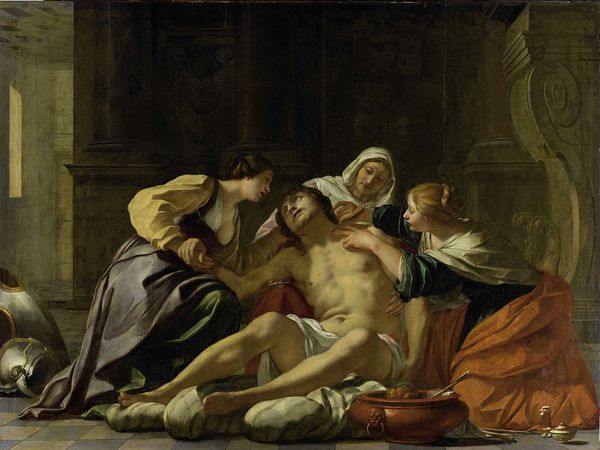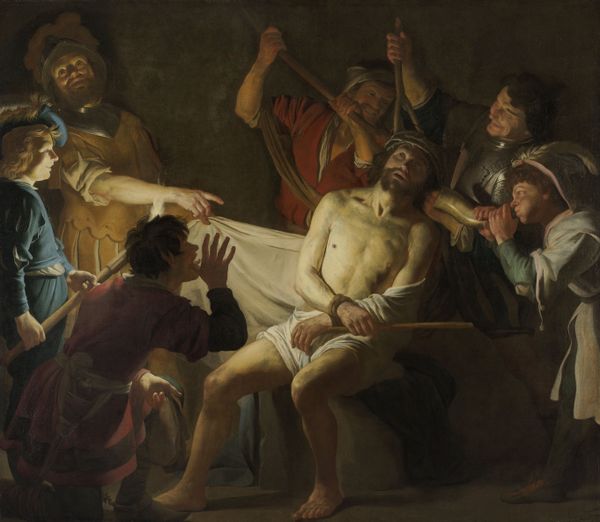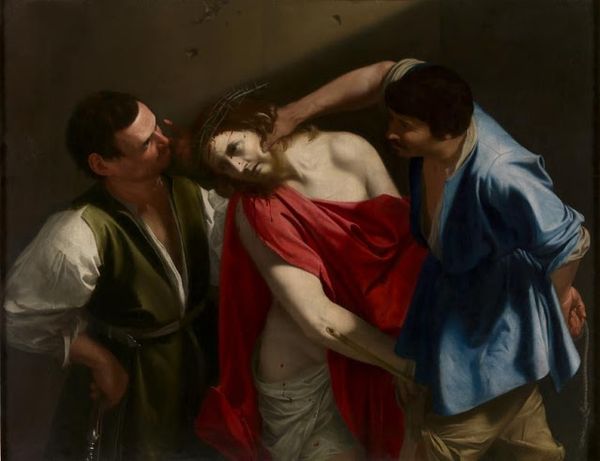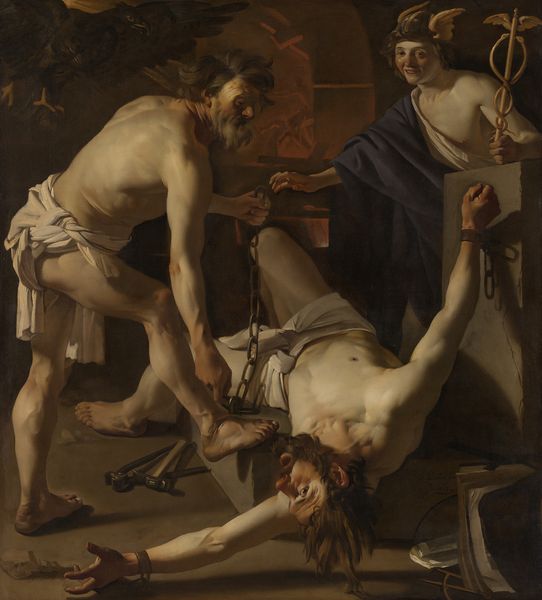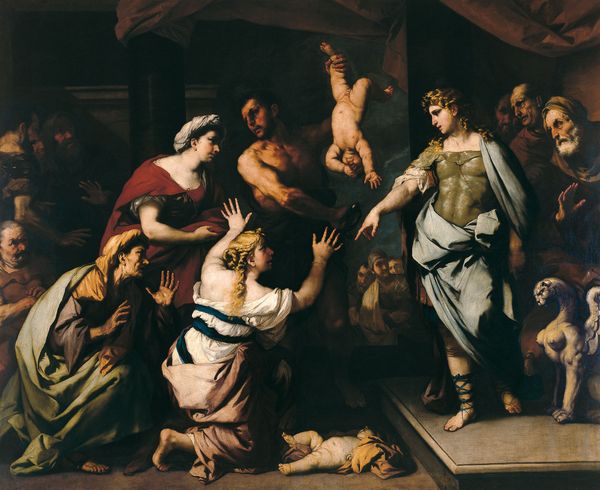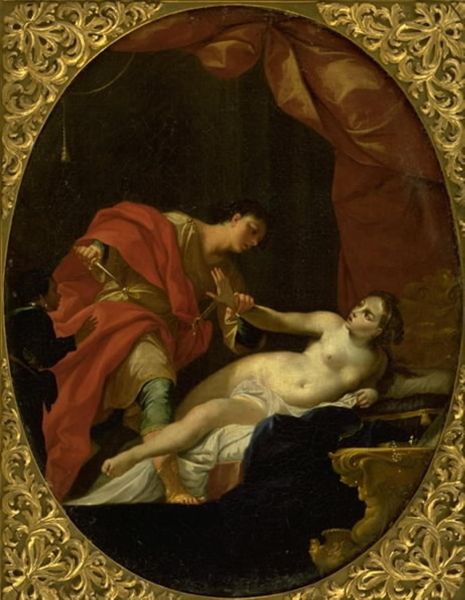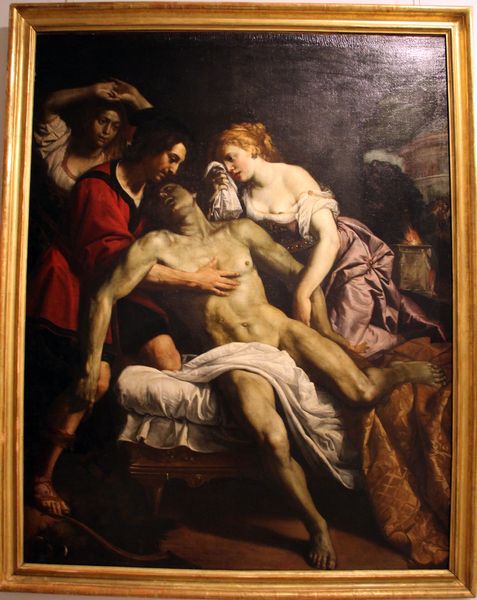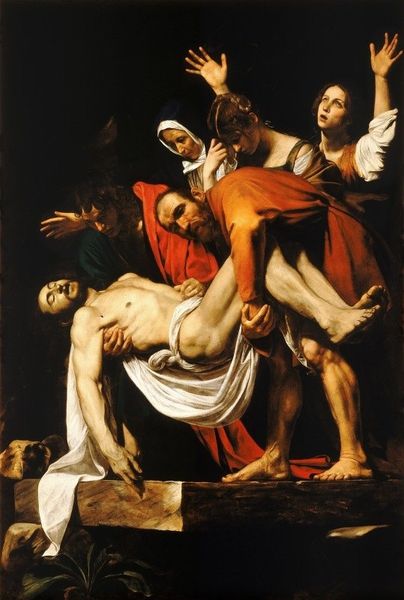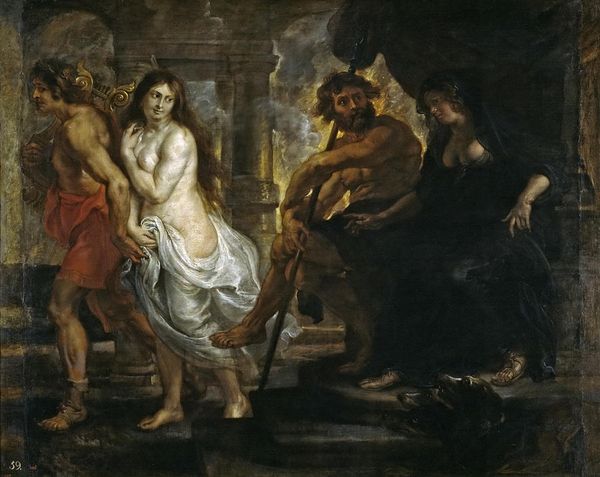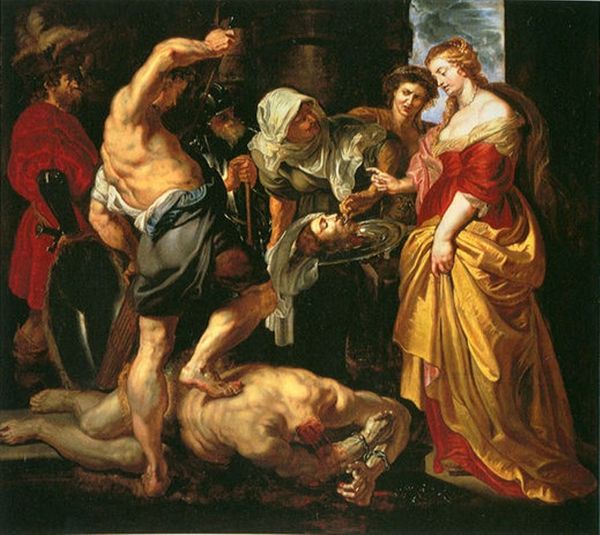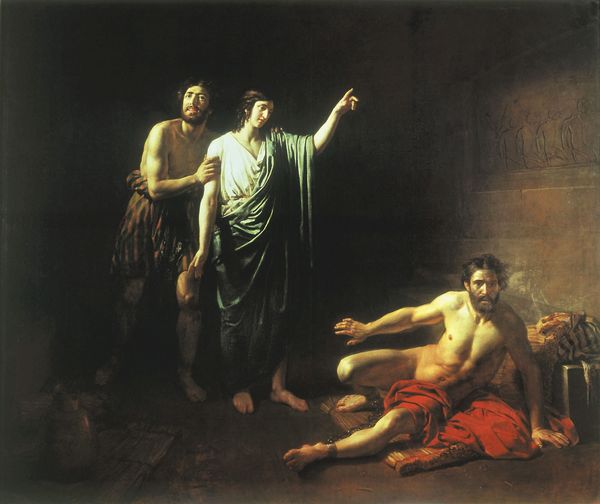
oil-paint
#
baroque
#
dutch-golden-age
#
oil-paint
#
figuration
#
history-painting
#
nude
Copyright: Public domain
Gerard van Honthorst painted Susanna and the Elders in the 17th century, a period marked by Counter-Reformation ideals. The painting depicts a biblical scene, focusing on the themes of power, voyeurism, and vulnerability. The setting and costumes evoke the exotic allure of the East, reflecting the cultural fascinations of the time. It can be read as a challenge to existing social norms, questioning the authority of powerful figures and shedding light on issues of sexual harassment. Honthorst's Susanna invites us to ponder the politics of imagery and the social conditions shaping artistic production. By analyzing the visual codes and cultural references within it, we can better understand the societal values and power dynamics that influenced its creation and reception. Historical research, including religious texts and contemporary social commentaries, can provide deeper insights into the context and meaning of this artwork, highlighting the complex interplay between art, society, and institutional power.
Comments
No comments
Be the first to comment and join the conversation on the ultimate creative platform.
